As we approach the final planting stage and consider the possibility of leaving our tomato plants out overnight, it may be a good idea to recap some of the tips for optimisation and some ways to help prevent diseases and keep our plant healthy.
Tips for Growing Tomatoes in Containers
Pots – air in the root zone is essential for root health and strong growth.
Use perlite added to the soil up to 50% of total mix.
A wick of capillary matting is good if you are watering from below – essential if you are using an air pot.
An air pipe is useful if using conventional pots.
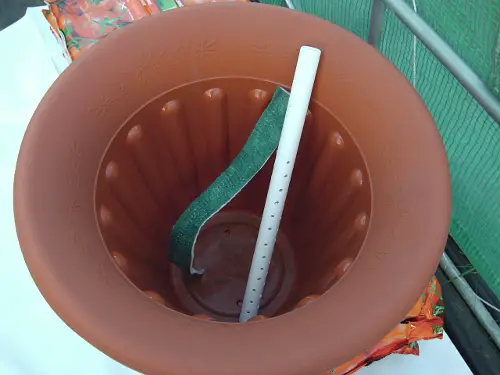
The above photo shows a large “final planting” pot with air pipe and wick for easy watering from below.
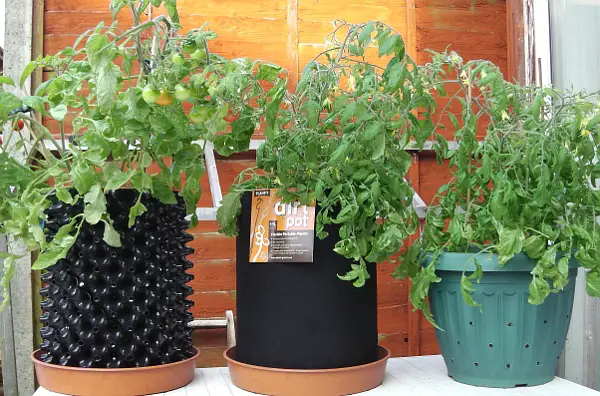
Air in the soil is essential for healthy growth and the three pots above are a good way to provide it.
Grow Bags – can be optimised too
An advantage grow bags have over large pots is the large surface area – this allows extra access to air at the soil surface.
Grow pots are also helpful and help keep excess water away from the stem base but allow water/food (aka fertigation) to be given at the fine roots in the inner ring nearest the stem.
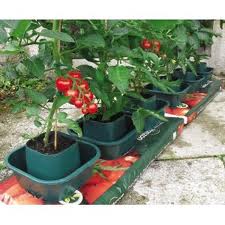
Grow bags have a tendency to stress tomato plants as the large surface area means that evaporation in warm weather is high – so soil moisture – wet/dry – goes up and down like a yoyo!
Regular access to water can help avoid plant stress.
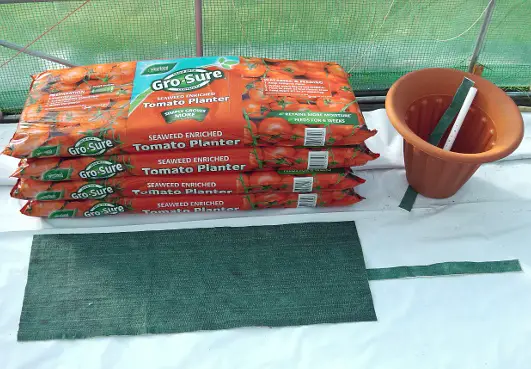
I always add perlite to my grow bags too – especially near the base of each plant.
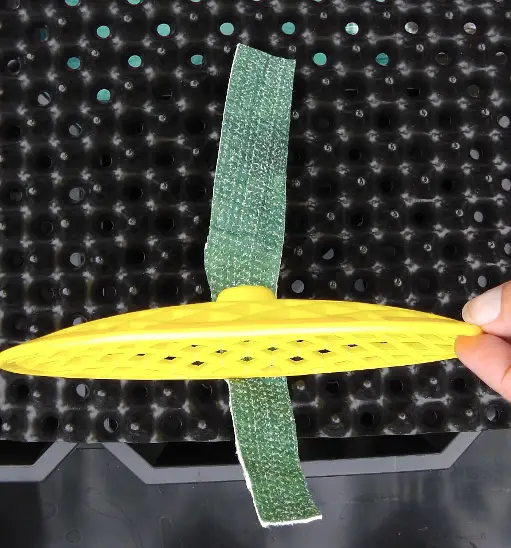
Feeding and watering
Tomato plants like access to food and water as we do – whenever they’re hungry and thirsty!
Professional growers water and feed their plants “little and often” several times each day but they have the advantage of warm, dry conditions each day too!
An important tip is not to over-water or over-feed because in both circumstances plant roots can easily be damaged.
If in doubt regarding food, give your plants a foliar feed to avoid upsetting the nutrient balance in the soil.
Weather conditions
If your plants are outside, the rain will often water your plants for you … whether they need watering or not!
Rain on leaves, especially at night when temperatures drop, is a danger to their health. A week of wet weather will probably finish them off!
However, rain does have the advantage of being slightly acidic regarding its pH – tomato plants like water that’s slightly acidic because it gives access to the widest range of nutrients in the soil.
In unheated greenhouses and pollytunnels, condensation and damp conditions is the enemy – aeration is very important in order to keep the humidity down.
Disease prevention tips
- Aeration in greenhouse/pollytunnel.
- Don’t crowd plants.
- Remove lower unhealthy looking leaves.
- Diseases can spread on fingers so don’t touch leaves unless you need to.
- Don’t over-water – it’s best to under-water when humidity is high and temperatures are cold.
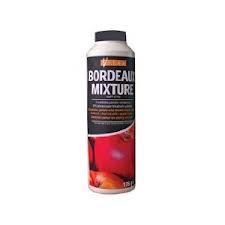 Most of us would love to be totally organic, but a spray with an anti-fungal treatment such as Bordeaux Mixture (copper sulphate) may be the only way to get a crop of tomatoes growing outside in a poor, wet summer.
Most of us would love to be totally organic, but a spray with an anti-fungal treatment such as Bordeaux Mixture (copper sulphate) may be the only way to get a crop of tomatoes growing outside in a poor, wet summer.
Let’s hope we get more sun than last season and less rain than the season before … it’s tough being a tomato grower if the weather is against you!
Regards,
Nick
